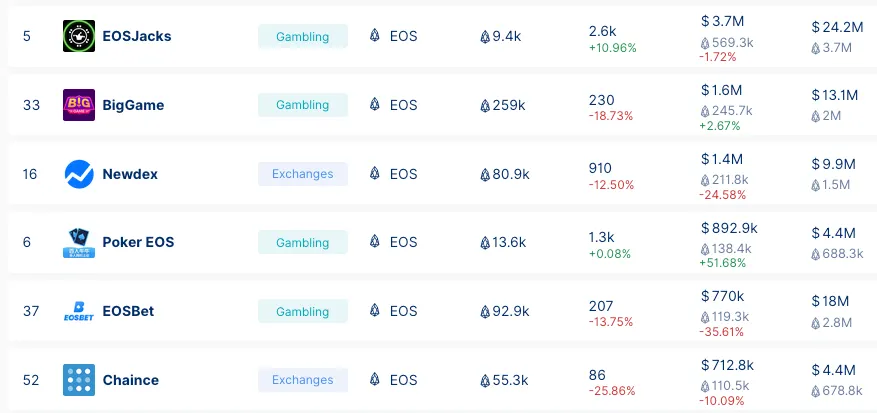Just a quarter of EOS dapp transactions were made by real people, a new study claims.
The report was written by AnChain.AI—a blockchain startup which uses machine learning to analyse blockchain data. It concludes that 75 percent of transactions on EOS dapps were made by bot accounts using automated programs to make high levels of transactions.
In addition, the report found that half of all the EOS accounts using dapps were bots.
EOS dapps—like most dapp ecosystems—suffer from too few users, so the research findings are a matter for concern. According to dapp explorer DappRadar, just five EOS dapps had more than 1,500 users in the last 24 hours.
But the results of AnChain.AI’s report shouldn’t be a surprise. EOS transactions have no transaction fees, so there’s nothing to stop people spamming the network or using bot accounts to make thousands of automated transactions every day. Instead the network charges dapp developers storage fees, paid in the cryptocurrency RAM.
There are many reasons bot accounts are used. Dapp users may, for instance, be perfecting gaming strategies. Something that needs thousands of transactions will be easier if bots are used to make automatic transactions.
Backing up the report’s finding is data from DappRadar, as seen in the image below. This shows that the dapps with the highest daily transaction volume have remarkably few users.

Metrics such as user activity and daily volume are important indicators of a dapp’s success. Yet, as AnChain.AI points out, bot activity calls this all into question, making the industry “difficult to understand, regulate, operate, and secure.”
The dapp ecosystem is still maturing and is unregulated, and monitoring blockchain transactions that may be run by bots is hard.
Until processes are standardized and detection tools improve, it’s wise to take any stats from dapp ranking sites, such as DappRadar, with a pinch of salt.

